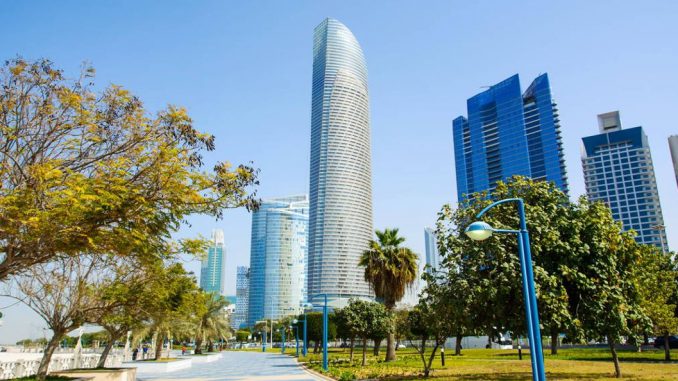
In a brilliant piece of infrastructure reuse, Abu Dhabi has given an underground gas pipe from the 1960s a new lease of life by transforming it into a water line.
Using a pipe rehabilitation method known as swagelining, the pipeline will now serve as a backbone for water transport by carrying treated and recycled water.
The pipeline was originally installed to transport gas along a 19km stretch across Abu Dhabi island, connecting an oil refinery to a power station.
Then in the 1990s, the municipal Sewerage Projects Division (SPD) repurposed it for use in an irrigation network. The irrigation network used treated wastewater to feed a major greenbelt running through the city.
Over time, internal and external corrosion severely weakened the line. Traditional open trench replacement would have been disruptive because the pipe ran under busy streets and beneath the greenbelt it once helped nourish.
Rather than excavate and replace the pipe entirely, it was decided to use a trenchless rehabilitation method – swagelining.
Swagelining involves pulling a high-density polyethylene (HDPE) tight-fit liner through an existing host steel pipe.
The liner is made to be slightly bigger than the host pipe. It is temporarily reduced in diameter using a die and then allowed to return to its original shape once inside the pipe. This makes it press tightly against the inside of the old pipe, eliminating almost all annular space.
UAE pipe repair experts selected a HDPE liner based on withstanding operating pressure of 6 bar and delivering a design life of at least 50 years.
Before swagelining took place, the host pipe had to be thoroughly assessed to ensure it could safely host the liner and provide structural backing.
That was not the only challenge or consideration before the process could be approved. Pulling long lengths of liner through 19km of underground pipe involved coordination with traffic and other utilities like electric and gas. Consideration also had to be given to fixed assets on the surface.
Prior to installation, a system had to be formulated which allowed for monitoring the rehabilitation after it took place.
Assessing joint integrity and the interaction between the host and the pipe would be vital for a long-lasting and successful repair.
Once it was determined swagelining would work, the pipe was cleaned. The lining was pulled through each section at a steady rate of around two metres per minute.
Within 24 hours, the HDPE relaxed and reverted to its original diameter. Now fitted tightly against the host pipe, each section was hydrostatically tested to 9 bar. No leaks were found in the liner, indicating the rehabilitation of the line had been a success.
The completed repair left Abu Dhabi with 19km of water pipe whose original steel wall was now protected against corrosion. HDPE improved capacity and reliability of the line, creating a smoother internal flow.
Swangelining avoided major disruption to urban life, as well as the need to dig up the precious greenbelt. The project aligned perfectly with Abu Dhabi’s push to optimise resources, reduce disruption, and integrate infrastructure reuse rather than always building new.
And it should not really come as a surprise. The UAE is a world leader when it comes to linking utilities into sustainability.
No better example exists than the vast district cooling systems in the UAE, providing air conditioning to entire buildings, complexes and industrial areas from one central source.
Other cities and nations with ageing hydrocarbon-era infrastructure can take inspiration from how Abu Dhabi turned this gas pipe into a water line. It provides a blueprint for repurposing existing infrastructure in a rapidly evolving and busy city.
Similar methodologies might apply in regions where abandoned or under-utilised energy-infrastructure could be redesignated for water or other utility flows.

Leave a Reply